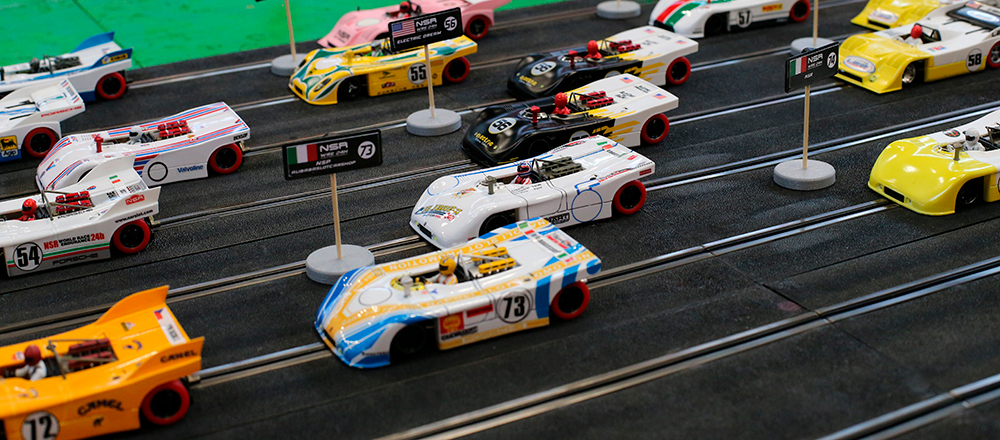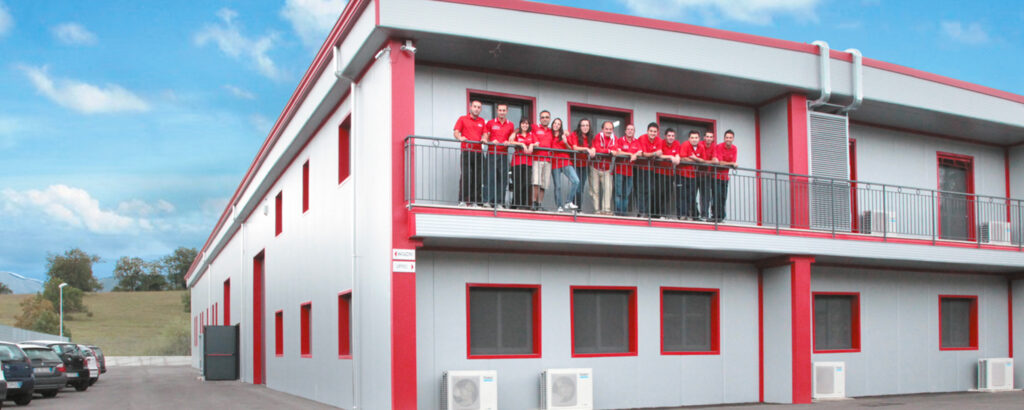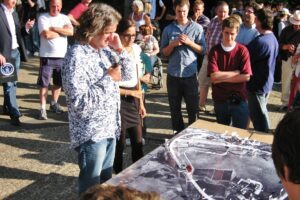
History of Slot Cars: from the origins to today
The history of slot cars is the story of a particular form of entertainment that has united-and still unites today-enthusiasts of all ages. These small racing vehicles, driven on grooved tracks, slowly over time have made their way into the imagination of the ludic, so much so that they have broken the conceptual cage of the "simple toy" to the point of being considered a perfect example of technical modeling thanks to new technologies.
History of slot cars: the origins
The first slot cars originated in the first half of the 20th century as a niche pastime for adults. As early as 1912, the Lionel Corporation had included in its catalog what we can now call the great-grandmothers of our current slot cars. Specifically, the cars recovered power from a small train rail sunk into a special seat connected to a battery. However, growing user demand for a model speed experience led to a decisive evolutionary step that came with the introduction of the "Model Auto Racing" (MARX) sets, among the first slot car systems (as we understand them today) ever made. These sets were initially intended for an adult audience of car racing enthusiasts who could now simulate racing on four wheels, albeit on a smaller scale.
The Golden Era of Slot Cars.
However, the real slot car boom came in the 1960s, when companies such as Aurora Plastics Company and Scalextric began producing slot car sets for the mass market. These sets were also designed for young racing enthusiasts and soon became a big hit. Slot cars were now accessible to a wider audience, and the tracks and vehicles became increasingly sophisticated. These sets included electrified tracks with grooves, driver controls, and more detailed car models. Tracks could be configured into complex circuits, and racing became more competitive.
In practice, as mentioned above, it is safe to say that the 1960s and 1970s were the golden age of slot cars. Tracks saw continuous upgrades to complex electrified tracks and timing systems, and car models became increasingly faithful to the race cars driven by professional drivers. With this practice, users were able to both pay homage to their favorites through scale reproductions of their slot cars and give room for their own whimsy by customizing their own slot car model.
Commercial tracks and the advent of professional racing
Around the world, not only companies dedicated to the industry developed, but also racing associations and committees. For example, in late 1962 the American Model Car Raceways in Burbank, California, was formed, and soon the business of designing and selling commercial eight-lane tracks became a truly international business.
Most of the early commercial tracks were coin-operated; an hour's use of the track cost on average between $1.50 and $2.50. Giant tracks of 200 to 300 feet in length were built, including a 408-foot behemoth at Motorama Raceways in Van Nuys, California, and an even larger track in East Meadow, New York of 475 feet. In the United States alone, in 1966, it was estimated that there were about 3,000 commercial racetracks.
Before long, slot car competitions also became popular worldwide, with enthusiasts building more and more customized tracks and participating in local and national races. Slot cars truly became a mass pastime, with many young enthusiasts competing to prove who had the fastest vehicle and the best driving control.
The decline of the 1980s and 1990s
In the 1980s and 1990s, slot cars began to lose popularity. Some experts attributed this trend to increasing competition from video gamesand other forms of electronic entertainment. Among many was Sprint 2, a two-player arcade racing video game produced by Atari in 1976 and used in early booths in arcades. Pole position, released in 1982 by Namco, which was one of the biggest hits of its time, remaining at the top of the worldwide arcade charts for almost two years. Just in the face of this growing phenomenon, companies that produced slot cars had to adapt to the new trends or disappear.
History of slot cars: the renaissance
In recent years, slot cars have experienced something of a renaissance. Longtime fans and new players alike have rediscovered the appeal of these mini-races. Companies have developed advanced technologies, such as Digital and remote control systems, which offer greater flexibility and customization options. The details of the car models are greatly improved, making the slot cars almost miniature works of art. Just think, for example, of the PORSCHE 917K - MARTINI - SPA 1000KM 1971 or to the RACETAXI FANATEC GT CHALLENGE.

NSR's recognized excellence in Italy
NSR is an example of just such a revival period. NSR is an Italian artisan company that produces 100% Made in Italy professional slot cars. It has been operating for more than a decade and has gained national and international fame. Its creations are recognized worldwide as an innovative concentration of technology, performing right from the start.
Today, slot cars enjoy a loyal and growing fan base. Slot car races are held in many parts of the world, with sophisticated tracks and high-level competition. Fans can also participate in online races, challenging players from around the world.
In conclusion, the history of slot cars is a fascinating tale of passion, technology, and evolution, both technical-industrial of manufacturers and the ability of users to discover, improve, and learn. From a simple form of entertainment for adults, slot cars have become a beloved pastime for all generations. They continue to evolve and adapt to current times, proving that the passion for racing and small-scale competition is more alive than ever. NSR is precisely helping to develop the passion for this area by making itself an increasingly valuable reference point for the entire industry.
This article has a comment
Comments are closed.





I have been browsing online more than 4 hours today, yet I never found any interesting article like yours.
It's pretty worth enough for me. Personally, if all website owners
and bloggers made good content as you did, the net will be a lot more useful than ever before.